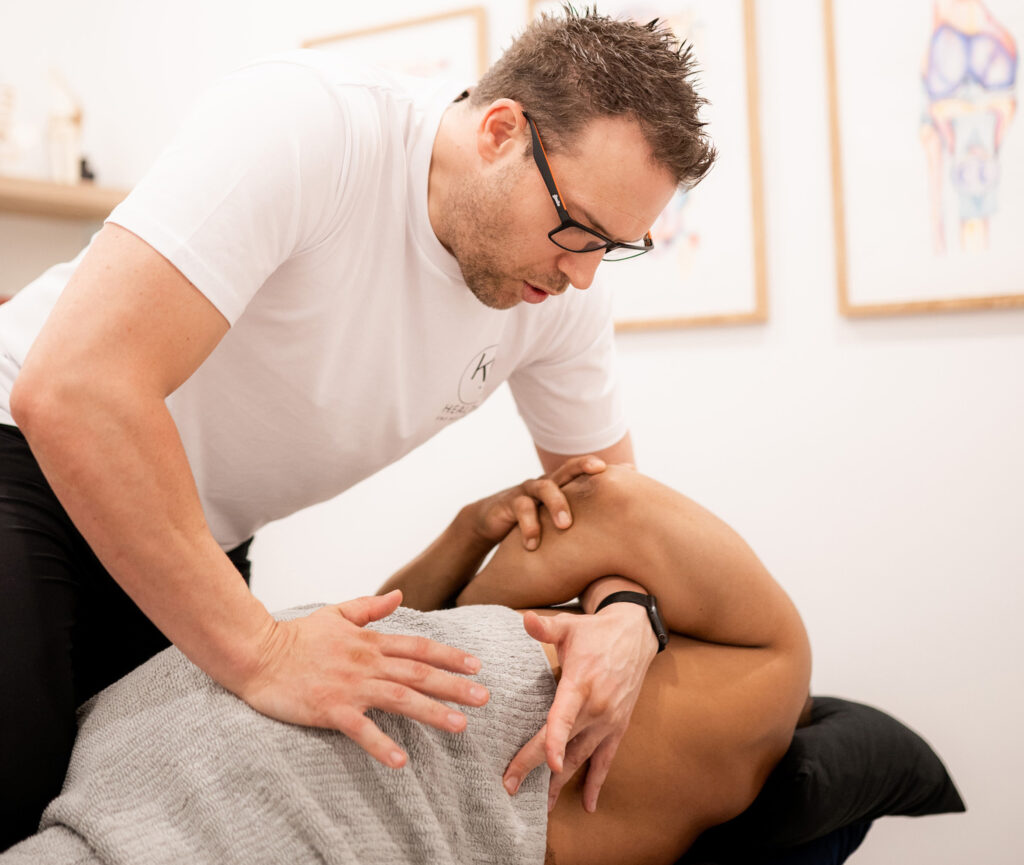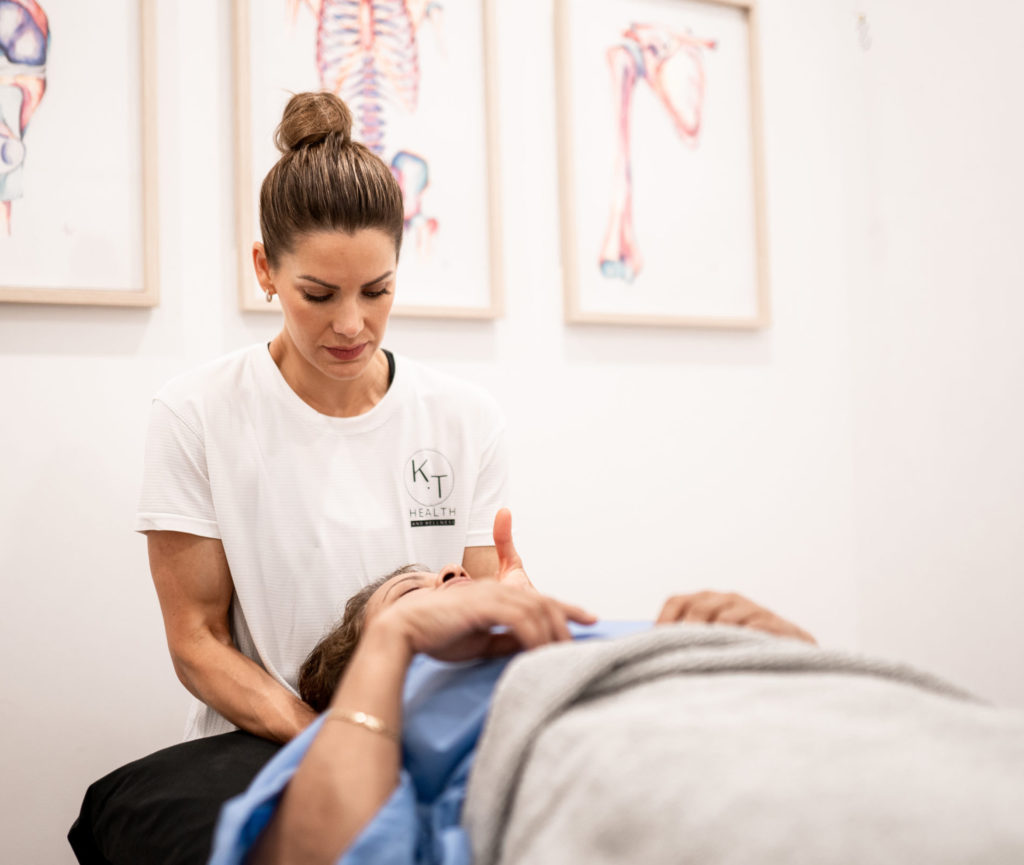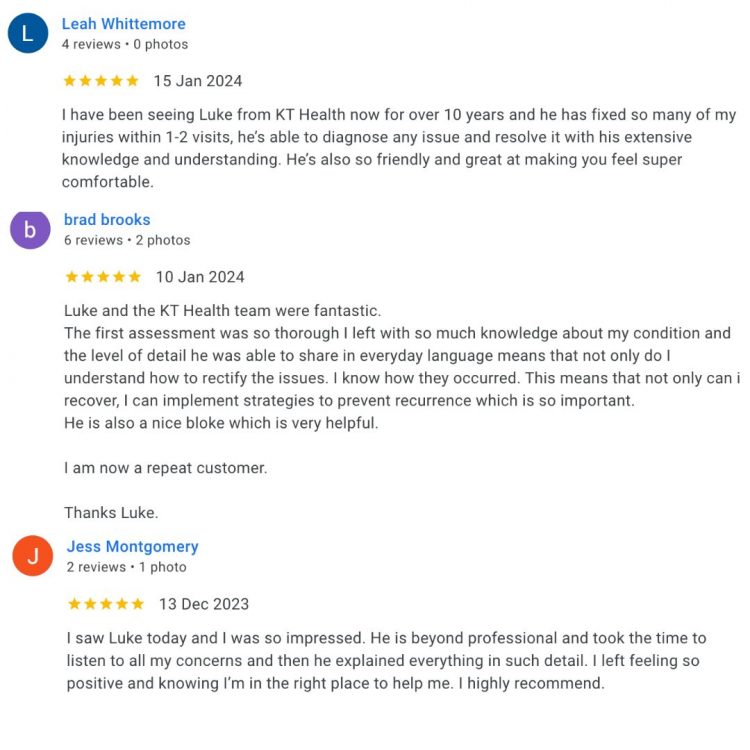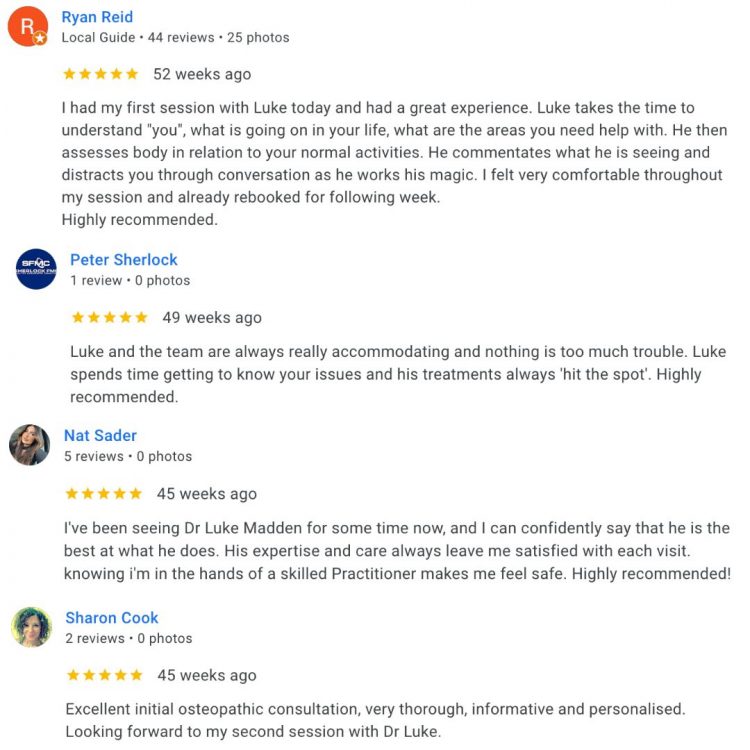Triceps tendonitis is an inflammation or irritation of the triceps tendon, which connects the triceps muscle (on the back of the upper arm) to the olecranon (the bony tip of the elbow). This condition causes pain at the back of the elbow, especially during pushing or straightening movements. It often develops due to repetitive overuse or strain.
An analogy…
Think of the triceps tendon like the cable on a garage door. If the door is opened and closed too often, the cable starts to wear out, fray, and stiffen. That’s what happens to the tendon when it’s overloaded repeatedly, it becomes inflamed and painful.
What are other names that triceps tendonitis can be called?
Triceps Tendonitis, Tricep Tendinopathy, Tricep Tendinitis, Tricep Tendinosis
What causes triceps tendonitis?
The triceps muscle extends (straightens) the elbow and attaches via the triceps tendon to the back of the elbow (olecranon). Repeated or forceful use of this tendon, especially during pressing, pushing, or throwing, can cause microtears and inflammation, leading to tendonitis. Over time, this can become degenerative if not managed early.
What are the signs and symptoms of triceps tendonitis?
- Pain at the back of the elbow, especially with pushing or extending the arm
- Tenderness at the triceps insertion point near the olecranon
- Stiffness or discomfort when starting movement
- Pain that worsens with press-ups, dips, throwing, or weightlifting
- Swelling or warmth may occur in more inflamed cases
- Weakness or reduced performance during extension-based activities
What tests are used to diagnose triceps tendonitis?
Palpation: The practitioner presses gently around the back of the elbow, particularly over the triceps tendon near the olecranon. In triceps tendonitis, this area is often tender or sore to touch, and may feel slightly thickened or swollen in more advanced cases.
Resisted Elbow Extension: The patient tries to straighten their elbow against the practitioner’s resistance. If this movement causes pain at the back of the elbow, especially near the tendon’s insertion point, the test is considered positive for triceps tendonitis.
How long does triceps tendonitis take to heal?
Mild cases may settle in 2 to 4 weeks with rest and rehab. Moderate to chronic cases can take 6 to 12 weeks or longer, especially if there’s underlying degeneration or poor biomechanics.
How does triceps tendonitis happen?
- Repetitive pushing or pressing exercises
- Sudden increase in training load or volume
- Poor lifting technique
- Sports involving throwing or explosive arm movements
- Muscle imbalances between triceps and surrounding stabilisers
- Previous elbow or shoulder injuries
What treatment can help triceps tendonitis?
- Rest from aggravating movements
- Ice application and anti-inflammatory medication
- Manual therapy such as massage, dry needling, or joint mobilisation
- Stretching and eccentric strengthening for the triceps and surrounding muscles
- Activity modification and load management
- Taping or elbow bracing for support during movement
What exercises or stretches can I do for triceps tendonitis?
- Isometric triceps activation
- Eccentric triceps exercises
- Triceps and lat stretches
- Scapular stabilisation and shoulder control drills
- Gradual reintroduction to pressing or throwing
- Postural correction and ergonomic advice
What products can help with triceps tendonitis?







